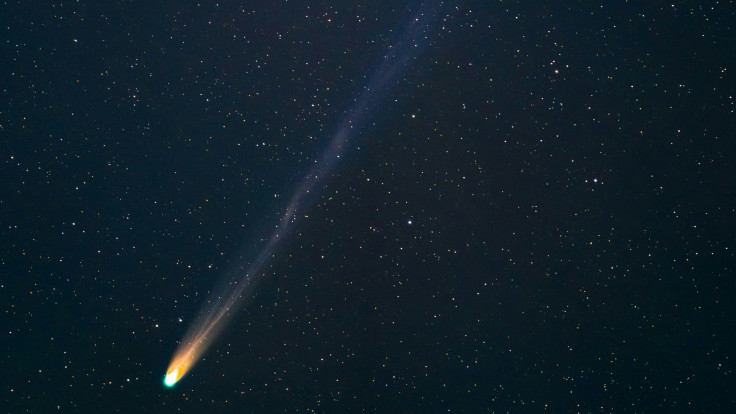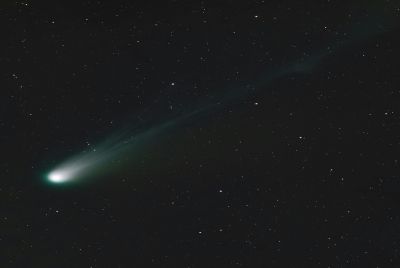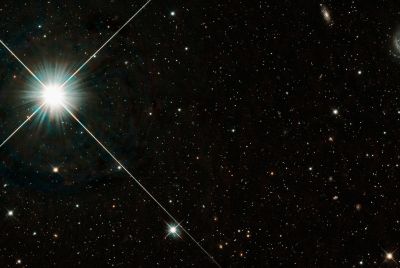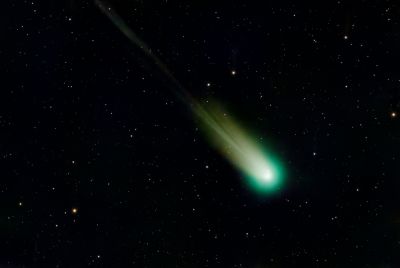3I/ATLAS Radio Signal Detected, Lines Up With 1977 'Wow! Signal'
A groundbreaking coincidence has astronomers in buzz after a discovery that connects a 1977 signal to the present day.

The most mysterious interstellar visitor of our time has just spoken. After months of exhibiting bizarre behaviour—including lacking a visible tail and moving on an unprecedented trajectory—the interstellar object 3I/ATLAS has finally yielded its first successful radio detection, confirming it is 'actively interacting' with its environment.
This major breakthrough, achieved by a South African observatory after two failed attempts, has catapulted the object from being 'just a comet' into a primary target for researchers searching for extraterrestrial life.
The successful detection now brings a fringe, yet compelling, theory back into focus: that 3I/ATLAS may have been the source of the famous, unexplained 'Wow! Signal' detected nearly five decades ago.
The discovery marks a monumental step in the object's observation since it was first discovered on July 1st.
While the official data points toward thermal emission, the sheer coincidence of this interstellar object being tied to the Wow! Signal—along with the object's highly anomalous flight path—has left scientists stumped and reignited the possibility of an artificial origin.
First Radio Detection: What MeerKAT Unveiled About 3I/ATLAS
The successful detection was made by the MeerKAT radio telescope at the South African Radio Astronomy Observatory (SARAO) on October 24, 2025.
This achievement came after previous efforts on September 20 and 28 were in vain. The precise moment of success occurred when the angular separation of 3I/ATLAS from the Sun was 3.76 degrees.
The telescope picked up radio absorption lines from hydroxyl radicals (OH molecules) emitting from the interstellar object. These OH absorption signals were detected in two spectral lines at radio frequencies of 1.665 and 1.667 gigahertz.
Harvard scientist Avi Loeb reported the discovery in his blog, noting that the detection of the OH absorption signal results from the full speed of 3I/ATLAS relative to Earth.
- At the time of detection, the distance between 3I/ATLAS and the Sun was 1.38 times that of the Earth and the Sun.
- Loeb added that the resulting thermal speed of the OH molecules was shed from the surface of 3I/ATLAS at a temperature of '~230 degrees Kelvin.'
- The object had already displayed several oddities prior to the radio signal, including virtually 'no tail' and, in fact, had an 'anti-tail initially.'
While the hydroxyl absorption signal is currently the only radio detection reported for 3I/ATLAS, Loeb has publicly expressed hope that more information will be gathered as the object continues its journey.
The Juno spacecraft will use its dipole antenna to search for a radio signal from 3I/ATLAS at low frequencies when the object is 53 million kilometres from Jupiter on March 16, 2026.
3I/ATLAS and the Unexplained 'Wow! Signal' Coincidence
The discovery of a radio signal from 3I/ATLAS is particularly relevant due to the stunning potential link to the 'Wow! Signal.'
The unexplained signal was detected nearly five decades ago, on August 15, 1977, by SETI astronomer Jerry R. Ehman, who simply wrote 'Wow' on the computer printout in his surprise.
Loeb previously raised the possibility that the 1977 signal could have been emitted by 3I/ATLAS. His calculations showed a startling alignment:
- The arrival direction of 3I/ATLAS coincided to within '9 degrees with the arrival direction of the Wow! Signal.'
- Loeb calculated that the 'chance of two random directions in the sky being aligned to that level is about 0.6 per cent,' suggesting the coincidence is highly unlikely to be random.
The detected intensity of the 'Wow! Signal' was strong, corresponding to a source power of "0.5–2 gigawatts," which is the output of a typical nuclear reactor on Earth. The signal was observed at a frequency of 1420.4556±0.005 megahertz, 'blue-shifted by about 10 kilometres per second towards Earth' relative to the central frequency of the hydrogen line.
If an artificial signal is ever confirmed, Loeb notes the urgency would depend on the object's rank on the Loeb Scale. A Rank 10 would suggest 'an imminent threat akin to a visitor to our backyard who is capable of approaching the front door, requiring an immediate response,' necessitating a clear contingency plan for humanity.
© Copyright IBTimes 2025. All rights reserved.




















